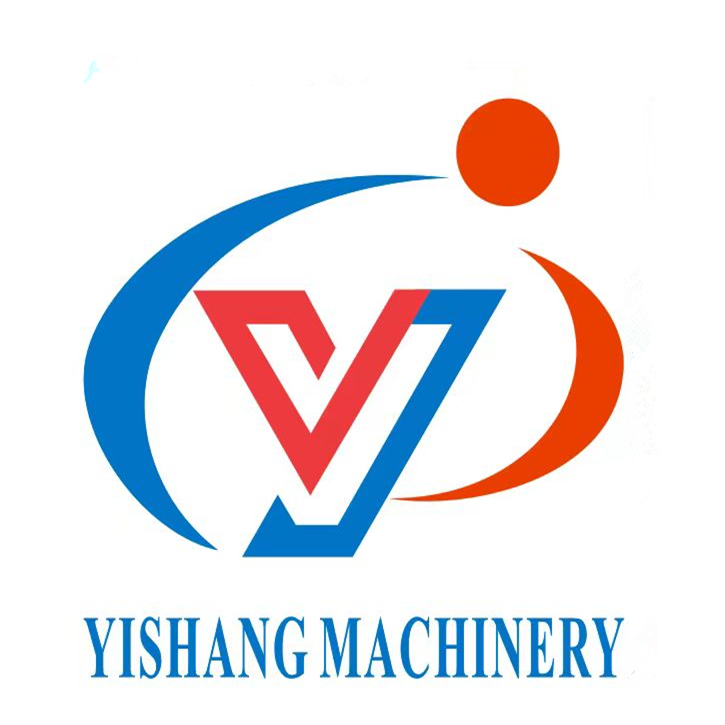
An Introduction to the Column-Type Rotary Bag Palletizer
 2025-11-25
2025-11-25
Features and Advantages:
1. Exceptional High-Speed Performance
The machine's core design, featuring a continuous rotary motion with multiple gripper heads, allows for the simultaneous picking and placing of several bags in a single, fluid cycle. This parallel operation eliminates the stop-start delays common in single-arm robotic systems, enabling it to achieve unparalleled throughput rates that can exceed 2,000 bags per hour, making it ideal for high-capacity production lines.
2. Unmatched Flexibility and Quick Changeover
Equipped with a programmable turntable and an intuitive Human-Machine Interface (HMI), the palletizer can store a vast library of pallet patterns (e.g., interlocked, brick) and bag sizes. Switching between different products or patterns requires only a few commands on the touchscreen, drastically reducing changeover downtime and enabling seamless batch processing for diverse product portfolios.
3. Superior Pallet Load Stability
The precision of the programmable grippers and the rotating pallet turntable ensure every bag is placed in an exact, pre-defined position. This allows for the creation of complex, interlocked layer patterns that significantly enhance the stability and integrity of the final palletized load. This minimizes the risk of load shifting during transit, reducing product damage and logistics costs.
4. Robust and Reliable Construction
Built for demanding 24/7 industrial environments, these palletizers are constructed with heavy-duty steel frames and industrial-grade components. The column-type design provides immense structural stability, while the mechanical drive system is often simpler and more robust than complex multi-axis robots, resulting in higher mean time between failures (MTBF) and reduced long-term maintenance needs.
5. Significant Labor and Space Optimization
By fully automating the palletizing process, a single machine can replace multiple manual laborers, leading to substantial labor cost savings and the elimination of repetitive strain injuries. Furthermore, its vertical design and compact footprint concentrate the palletizing operation into a small area, freeing up valuable floor space for other production or storage needs.
6. Advanced Control and Integration Capabilities
At the heart of the system is a sophisticated Programmable Logic Controller (PLC) that orchestrates all movements with precision. Modern machines offer seamless integration with higher-level Plant Management Systems (MES/ERP), providing real-time data on production counts, pallet patterns, operational status, and diagnostic alerts for proactive maintenance and optimized production monitoring.

In the fast-paced world of manufacturing, logistics, and bulk goods handling, the final step of palletizing bags can often become a bottleneck. Manual palletizing is labor-intensive, inconsistent, and poses significant risks of worker injury. Traditional robotic palletizers, while automated, can be limited by their speed and single-pick cycle. Enter the Column-Type Rotary Bag Palletizer—a paradigm of engineering excellence designed to deliver unparalleled speed, flexibility, and reliability for high-volume bag handling operations.
The Column-Type Rotary Palletizer is a high-speed, automated machine engineered specifically for the systematic stacking of bags onto pallets. Its name is derived from its two primary structural and functional components: the vertical Columns that provide the machine's framework and the central Rotary mechanism that orchestrates the pick-and-place process.
The design philosophy is centered on continuous motion and simultaneous operation. Unlike linear or single-arm robotic palletizers that often operate in a stop-start, sequential manner, the rotary palletizer utilizes a continuous circular motion to pick, orient, and place multiple bags in a single, fluid cycle. This fundamental principle is the key to its exceptional throughput, making it the ideal solution for industries such as cement, fertilizers, chemicals, food, and animal feed, where production lines can exceed 2,000 bags per hour.

A typical Column-Type Rotary Bag Palletizer consists of the following integral subsystems:
Infeed Conveyor System: Bags arriving from the production line are singulated and spaced at precise intervals. Advanced models may include automatic bag flatteners and aligners to ensure each bag is perfectly positioned for pickup.
The Rotary Bridge & Gripper Head Assembly: This is the heart of the machine. A robust, rotating bridge is mounted between two or more vertical columns. Suspended from this bridge are multiple, independently operated gripper heads (typically 2 to 4, or more). These gripper heads are equipped with mechanical clamps, vacuum pads, or a combination of both, designed to securely lift bags of various sizes and materials (e.g., woven PP, paper, plastic).
Lifting Columns: The vertical columns house the mechanism that raises and lowers the entire rotary bridge. This allows the machine to build a pallet layer-by-layer, precisely controlling the height for each placement.
Pallet Handling System: This includes:
Pallet Dispenser (Magazine): Automatically feeds empty pallets into the palletizing zone.
Pallet Conveyor: Indexes the empty pallet into the "drop zone" and removes the full pallet once stacking is complete.
Turntable: Located in the drop zone, it rotates the pallet to facilitate different stacking patterns (e.g., interlocked, brickwork).
Programmable Logic Controller (PLC) & Human-Machine Interface (HMI): The machine's brain. The PLC controls every aspect of the operation, from gripper timing to layer pattern formation. The user-friendly HMI touchscreen allows operators to select pre-programmed pallet patterns, adjust parameters, and monitor machine performance and diagnostics in real-time.
The Operational Cycle:
The process begins as an empty pallet is positioned in the drop zone. Simultaneously, bags are fed onto the infeed conveyor. The rotary bridge, with its array of gripper heads, rotates over the infeed line. Each gripper head picks up one or more bags. As the bridge continues its rotation, it moves to a position directly over the waiting pallet. The columns then lower the bridge to the precise height required, and the gripper heads release the bags in a pre-determined configuration to form a complete layer. The bridge then rises, rotates back to the infeed, and the cycle repeats for the next layer. The turntable may rotate the pallet between layers to create a stable, interlocked load.

The Column-Type Rotary design offers a suite of compelling advantages over alternative palletizing solutions:
Exceptional High-Speed Performance: The ability to pick and place multiple bags in a single, continuous rotation cycle results in dramatically higher speeds compared to single-arm robots. This makes it the only viable automated solution for ultra-high-capacity production lines.
Unmatched Flexibility: With a programmable turntable and multiple gripper heads, the machine can effortlessly switch between a vast library of pallet patterns and bag sizes. A simple change on the HMI is all that's required to adapt to a new product type, minimizing changeover downtime.
Superior Pallet Stability and Quality: The precision of the placement and the ability to create complex, interlocked patterns result in pallet loads of exceptional stability and integrity. This drastically reduces the risk of load shifting during transportation, minimizing product damage and losses.
Significant Labor and Cost Savings: By fully automating the most physically demanding part of the process, one machine can replace several manual laborers. This leads to direct labor cost savings, a reduction in workplace injuries (especially musculoskeletal disorders), and a lower total cost of ownership over the machine's lifespan.
Robustness and Reliability: Built with heavy-duty steel and industrial-grade components, these palletizers are designed for 24/7 operation in harsh environments, such as cement plants or fertilizer factories. Their mechanical simplicity, compared to complex multi-axis robots, often translates to higher mean time between failures (MTBF) and easier maintenance.
Optimized Footprint: Despite its power, the machine features a relatively compact vertical design, conserving valuable floor space in the production facility.
The Column-Type Rotary Bag Palletizer is more than just a piece of machinery; it is a strategic asset that transforms the end-of-line process from a costly bottleneck into a model of efficiency and reliability. It embodies the principles of Industry 4.0 through its programmability, data collection capabilities, and seamless integration potential with broader plant management systems.
For any business involved in the high-volume bagging of dry goods, investing in a Column-Type Rotary Palletizer is a definitive step towards maximizing productivity, ensuring product quality, safeguarding human capital, and securing a competitive edge in the global market. It is the pinnacle of automated palletizing technology, engineered to meet the demands of today and scalable for the challenges of tomorrow.+8615137127837

Whatsapp:++8615137127837
WechatID:+8615137127837
Email:[email protected]
Alibaba Store:
https://zzyishang.en.alibaba.com

